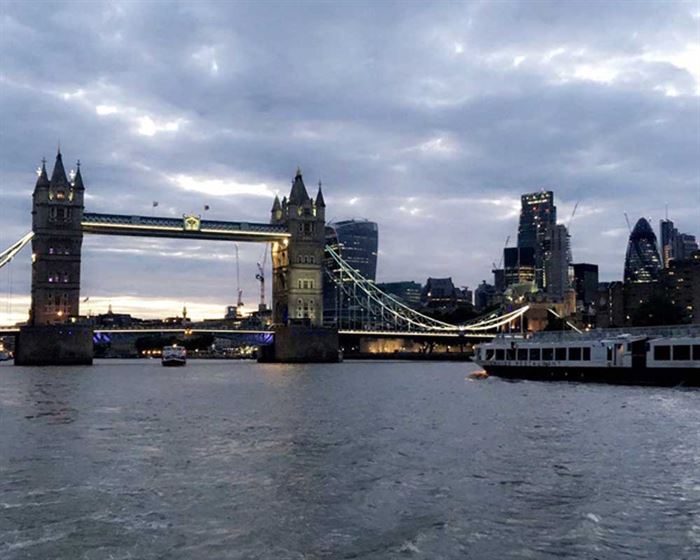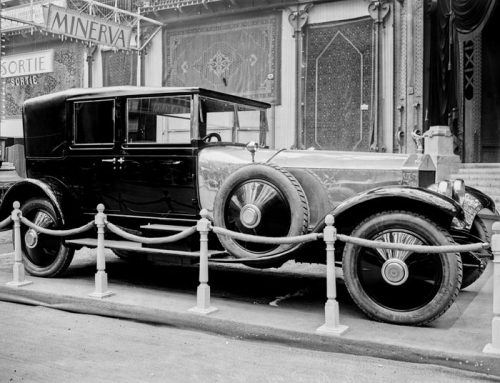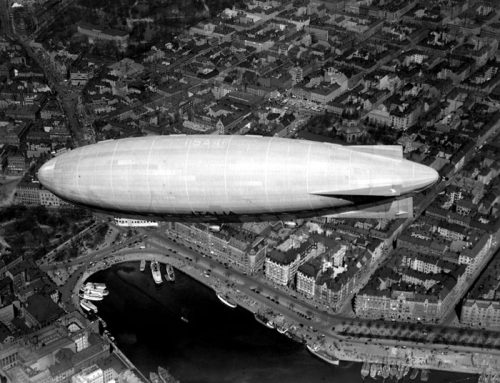How to become sustainable in London: transportation
15/09/2017
Tiempo de lectura: 5 minutos
London is the capital of England and is regarded as the most populous city in the United Kingdom, with the population estimated at 8.7 million. London has been crowned as the top global financial centre and therefore is considered to be a leading global city. However, London has a growing number of sustainability issues, despite being ranked as the fifth most sustainable city in the world in 2016. Roads in London remain congested and air pollution lines the sky of the city. Therefore, this article seeks to explore solutions to improve sustainability in London.
London is home to the oldest metro system, which is the London Underground, and has an excellent public transport system, including buses, taxis, trams, ferries and cable cars. However, more needs to be done in order to create a complete system that is fully effective and accessible to all groups of people. Currently, during peak periods the cost of train tickets substantially increase and rail fares overall have risen at twice the rate of wage increases since 2010. This leaves those who are economically disadvantaged unable to make use of the railway system and pushes them towards other modes of transport that may cause greater pollution to the environment. Therefore, a scheme should be introduced, either to partially lower the cost of rail fares for those that qualify based on their wages or sharing private transport should be encouraged in poorer neighbourhoods. This could be done by developing and encouraging the use of ride-sharing apps that are readily available for all audiences from different social and economic backgrounds.
Furthermore, commuting in London tends to be overcrowded in peak hours. Figures show that passengers wasted nearly 400,000 hours due to train delays in 2016, as a result of overcrowding. Thus, the London metro system is unable to keep up with the demand for travel created by London´s thriving population and unprecedented number of tourists. More needs to be done to overcome this issue in order to create a sustainable future in London. To alleviate the issue of overcrowding people should be given an incentive to travel earlier in the morning by cutting railway fares, for instance half price tickets for anyone travelling before 7am. In addition, the government should invest in creating more train lines, build bigger train stations, construct longer trains and introduce more escalators to reduce overcrowding in peak hours.
London taxis implement wheelchair ramps or have accessible step-free access. Most piers, boats and all tram stops have step free access. All London buses are served by low-floor vehicles that have wheelchair spaces and an access ramp. However, only a quarter of tube stations and half of overground stations have step-free access. Thus, accessibility needs to be improved on London’s railway system to create a sustainable city. Research found that a fifth of disabled people have difficulties when accessing public transport. Hence, there remains a great deal of train stations that are inaccessible for disabled people and those travelling with children in buggies, which becomes a barrier to access education, employment, leisure and an independent lifestyle. Therefore, in order to create an accessible transport system in London the government must allocate funding for more lifts and ensure step-free access is available on all lines.
Due to the extensive size of London, as well as dense road networks and tall structures, London suffers from a great deal of pollution. Air pollution in London repeatedly breaches EU limits and in 2017 London infringed its annual air pollution limit in just 5 days. This in turn impacts upon climate change and public health. A report found that London resident’s life expectancy is cut by roughly 16 months by air pollution. Furthermore, figures show that toxic air causes 40,000 early deaths a year in the UK. The suggestions given above regarding greater investment in public transport would substantially ease congestion on the roads by giving the public more and easier options to travel without owning or using vehicles. However, private transport also needs to be further assessed as a significant cause of pollution. Diesel engines in particular release more harmful NOx emissions as they operate at a higher temperature and pressure than petrol engines. Research highlights that modern diesel cars yield 10 times more harmful air pollution than lorries and buses. In order to reduce the number of these vehicles on the road congestion charge rates could be significantly increased to compel commuters to use public transport, particularly during peak periods. Congestion charges were introduced in 2003 and mean that drivers must pay a fee when entering particular zones in London.
Alternatively, as part of a long-term scheme, the sale of petrol and particularly diesel vehicles could be banned and electric cars take their place. More electric cars need to be manufactured, with different designs and price ranges to suit all types of consumers. Furthermore, the battery life of electric cars needs to be prolonged and the number of charging stations across the city needs to be expanded.
However, converting to electric cars will not fully reduce air pollution as they still produce large amounts of tiny pollution particles from brake and tyre dust. Therefore, the more sustainable option would be to reduce the number of vehicles on the road altogether. An expanded mass transit system is needed, served by modes of public transport such as buses, overground train lines and the underground system. Eradicating illegal levels of air pollution in London can also be achieved by encouraging other modes of travel, including walking and cycling. Therefore, the government needs to make roads safer for those walking and cycling, which would reduce toxic emissions from vehicles and provide greater health benefits. Thus, creating cycling lanes throughout London, constructing more footpaths and developing faster-reacting pelican crossings will encourage a greater number of people to cycle and walk. This would significantly reduce air pollution levels in London and move London towards becoming one of the most sustainable cities in the world.
Text and photo: Sohnia Gill


